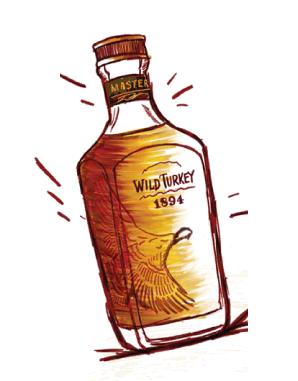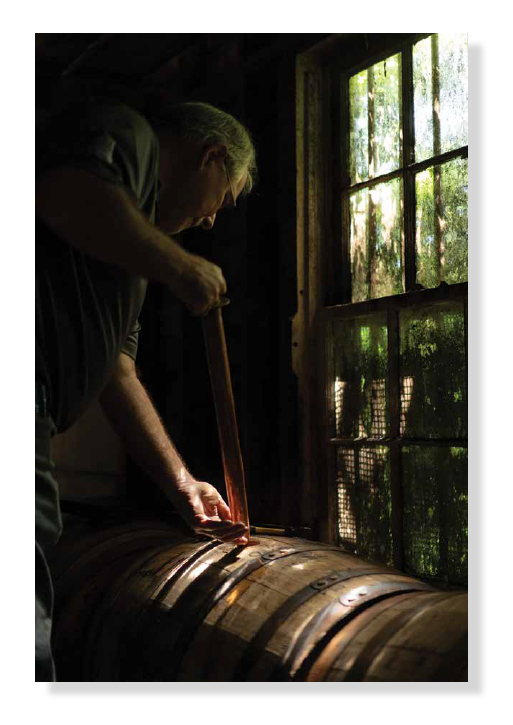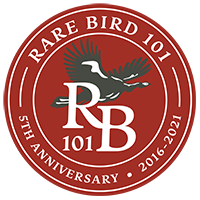
The Bird is Back!
Since the inception of the Rare Bird 101 blog in 2016, the name Rare Bird 101 has become synonymous with Wild Turkey Bourbon. Wild Turkey Musings: A Whiskey Writer’s Retrospective is a celebration
of the iconic brand and the passionate community that has grown out of the work of author, historian, and “superfan” David Jennings—aka Rare Bird.
In commemoration of five years of dedication to all things Turkey, Jennings sifted through hundreds of blog posts from 2016 to 2021 and distilled them to only the most essential. What remains is a collection of unique works that not only showcases the best of Rare Bird 101 but offers previously unpublished insight and perspective—the who, what, how, or why behind each article—as well as new charts, graphs, and maps. From reviews and “best of ” lists to unknown facets and lore of Wild Turkey’s multi-layered history, Wild Turkey Musings is perfect for whiskey fans of any proficiency level, from novice to expert.
Latest Reviews
Have a Taste on the House!

For decades, Wild Turkey has suffered an undeserved rough reputation. Most companies would consider that a serious problem—one best addressed with careful PR and possible rebranding. I’m not sure how talks in the boardroom of Austin, Nichols & Co. went, or Pernod Ricard, or even Campari for that matter, but I can tell you how the Russells addressed it. Regardless of ownership, they kept making quality bourbon and rye whiskey and continue to do so to this day. Reputation be damned: they stay true to their craft, respect their consumers, and in all ways embrace the distinctive label that started it all.
Unlike many distilleries that simply hire and fire distillers as needed, Wild Turkey has a family legacy to pass on. It may not be family owned, but it’s most certainly family operated. And let’s be honest, when it comes to the Russells, nobody’s sitting around. Jimmy could (and honestly deserves to) be living on beachfront property with his toes in the sand, but instead he gets up each morning and goes to work. Eddie carries the same work ethic and, in my opinion, is crafting bourbon that rivals some of Jimmy’s finest. And now a third generation is learning the ropes. Brand Ambassador Bruce Russell, who is currently based in Austin, TX, is spending more time in Lawrenceburg working directly with his father.
So, let’s stop and take a look at where we’re at today. There are now three generations of Russells, father to son, actively involved with the production of Kentucky straight bourbon whiskey for the same distillery. How often has that happened? Someone once joked that before Prohibition there were at least twelve Ripys making whiskey where Wild Turkey Distillery now stands. Of course, there’s Beams and Noes. But three paternal generations at the same location producing the same bourbon whiskey together is a truly rare occurrence. The torch is passing hand to hand, father to son, and thus the craft stays true. And the timing couldn’t be better, as I genuinely believe we’ve entered a New Golden Age of Wild Turkey.
Back in September 2018, I published “Hacking Wild Turkey.” It was a fun little piece all about experimentation and blending. Today’s post is a similar adventure. I’m always on the search for new Wild Turkey flavor profiles. Purchasing single-barrel expressions is one way to get there (arguably the best way in terms of quality). But buying single-barrel expressions can get rather expensive. And once you pop the top, what you have is all you’ll get (for better or worse). Blending, on the other hand, offers flexibility on a much wider scale—from budget to premium. Often, you’ll fail before you succeed. But, when you finally do craft a winner . . . well, it’s truly special.
Today, I’ll be sharing blending ideas not covered in last year’s post. Whether you appreciate these or not, I hope they inspire you to try your own Wild Turkey blends. Remember that there are no rules and you’re never “wasting” whiskey. Whiskey is made to be consumed and enjoyed. If you’re enjoying the blending process, you’re not wasting a drop. Also, there’s no reward without sacrifice; if you never take the chance, you never experience the outcome (miserable or marvelous). But before you start emptying your favorite bottles to fashion the ultimate Wild Turkey whiskey, consider trying one of these blends first. I think you might just come away happy.
What do you consider the criteria for an exemplary barrel of whiskey? Complexity? Maturity? Balance? Uniqueness? Rarity? Or perhaps it’s something harder to nail down—a sipping experience that confounds or stirs emotion.
Ultimately, one must decide what they’re looking for as a whiskey enthusiast. If rarity is an important aspect of a single-barrel whiskey, then the rest of this post likely won’t appeal to you. That being said, single-barrel releases are inherently uncommon in terms of bottle count. Take Russell’s Reserve Single Barrel private selections, for example. I’ve seen bottle counts as low as forty-two and as high as 180. One might call that rare—incredibly rare when focusing on a particular low-yield barrel. But then, with 600–800 (or more) barrels in the distillery’s barrel program year after year, and given vast subjectivity when it comes to the interpretation of profile variance, rarity starts looking more and more … common. And let’s not forget, thousands of barrels are aging gracefully at Wild Turkey as I type.
So, we’re left with quality, as defined by transparency, flavor profile, and the overall sipping experience. We’re talking about the whiskey itself, not the fancy bottle, box, label, tag, sticker, wax, felt bag, “gotta catch ’em all” alpha/letter, or hokey story about grandpa’s recipe or colonial generals.
Who made the whiskey? How did they make it? How does it taste? How does it make you feel?
The answers to these questions are key.


